
On July 13, 2021, young people who had worked hard for a day were about to lie down and take out their mobile phones, open the familiar Xiaopozhan App, and connect to the latest videos of their favorite up hosts with one click. .
As a result, I suddenly found that my vision went dark:

After a year, Station B The secret was finally revealed: a "scheming 0".
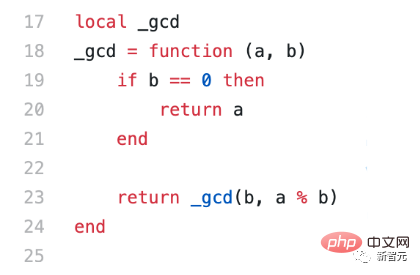
#However, have you ever thought about why this Weibo did not collapse even after experiencing a crazy influx of users?

Before uncovering this mystery, we need to start with the development of artificial intelligence.
On July 27, the 2022 New Wise Conference of "Integrating Ecology and Co-creating Value", guided by the Internet Society of China and hosted by Weibo and Sina News, was successfully held.
In the topic "Intelligence drives everything: AI promotes the accelerated arrival of the Internet of Everything", Weibo COO, Sina Mobile CEO, and Sina AI Media Research Institute Dean Wang Wei delivered a speech titled Keynote speech on "Cloud Empowers Weibo's Complex Business Scenarios for Integrated Applications of Digital and Intelligent Technology".
##Wang Wei said that if we look back at the development history of machine learning, we can It can be seen that the overall development trend of AI is: massive quantification and diversification of training data, complexity and generalization of AI models, and efficiency and scale of computing power.

The first is multi-modal data fusion.
#With the rapid development of 5G, image and video type modal content accounts for an increasing proportion of online content, so modal fusion is very necessary.
For Weibo, if we can perform multi-modal fusion of text, pictures, and videos at the same time, we can better understand the content of this Weibo.
Second, it is ultra-large-scale graph computing.
Compared with other machine learning models, ultra-large-scale graph computing has a special advantage: it promotes the flow, aggregation and integration of information through the transmission of information in the network.
For example, for a cold-start user with few behaviors, we can deduce the user's interests through information dissemination through the people in his follow list and the content posted by these people.
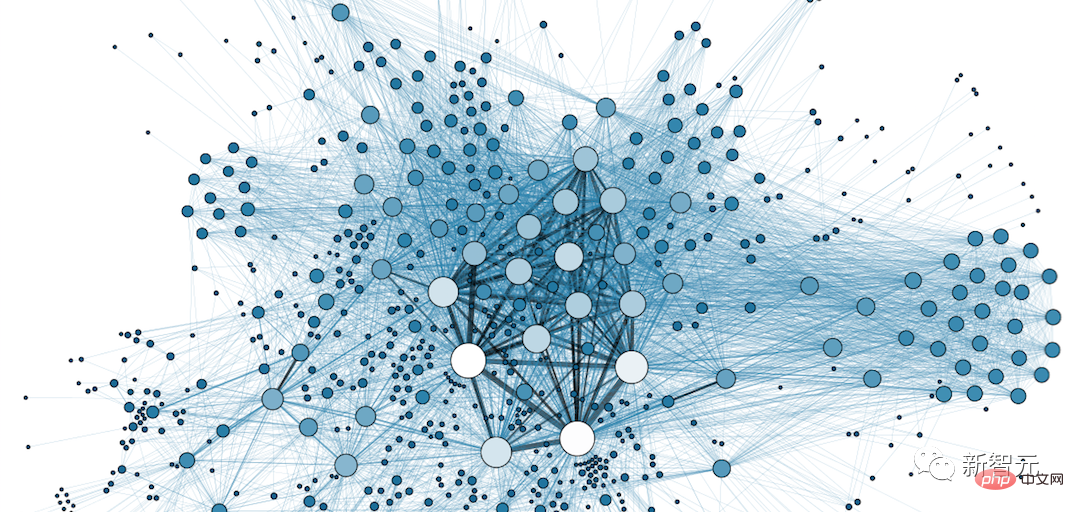
The third is the dumbbell mode developed by AI.
The current focus of AI research and development is one is increasingly larger super models, and the other is model miniaturization technology.
We all know that as the scale of model parameters is getting larger and larger, the model effect is getting better and better, and high-precision models are still increasing. For example, in 2018, Google’s Bert just When it came out, the model parameter size was 300 million, which was not too big, but since then this number has been growing rapidly.
The GPT-2 model developed by OpenAI has a parameter size of 1.5 billion, the GPT-3 model has a parameter size of 175 billion, and by the Switch Transformer released by Google in 2021, the parameter size has reached 1.6 trillion.
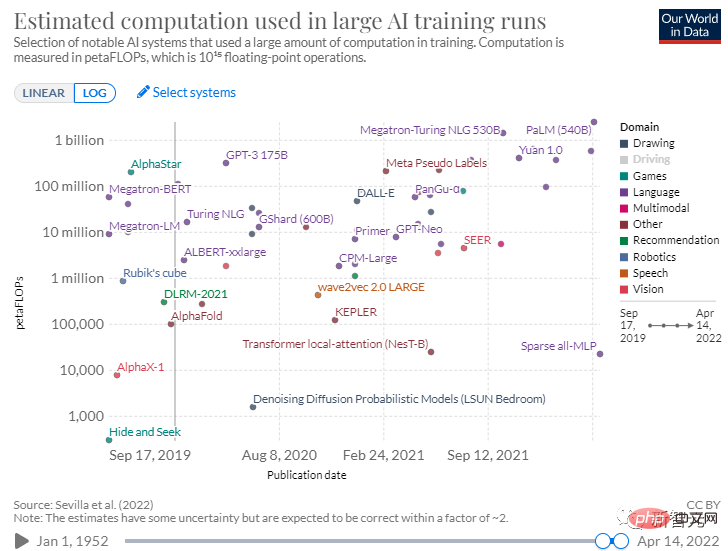
#On the other hand, although the larger the model, the better the effect, but because the model is too large, it sometimes makes it impossible to implement the actual application. Therefore, another focus of research and development is to miniaturize and lightweight these large models, such as model distillation, model pruning and other technologies.
Fourth, the AI model is moving from a special model to a general model.
Google disclosed the Pathways model framework in the second half of 2021. It first proposed this idea and hoped that by constructing a general large model, it could achieve "one model can do tens of millions of tasks". "thing" goal.
The specific idea is that after different task data are input, part of the path of the neural network is selected through the routing algorithm to reach the model output layer. Different tasks have both parameter sharing and task-specific model parameters.
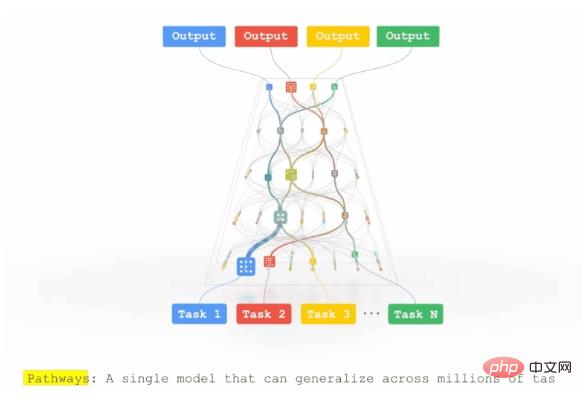
Super large-scale graph with 1 billion nodes and 10 billion edges
Why have you been talking about machine learning for so long? Because what’s coming next is the “Weibo Featured Recommendation System”.
As we all know, as the largest social media network in China, Weibo’s current monthly active users have reached 582 million! Such a large user scale will inevitably make the network environment on Weibo very complex.
Coupled with the high timeliness and high diversity of content, today’s major Internet events will explode on Weibo immediately.
In addition, the scenarios faced by Weibo are still very diversified, and it is necessary to distribute "thousands of people and thousands of faces" to users in many scenarios such as relationship flow, hot spot flow, video flow, etc. "Content.

I can live without fingers, but I can’t live without my phone
Face In complex business scenarios, how does Weibo use AI and big data to create a recommendation system that can adapt to changing circumstances?
Wang Wei introduced to us that the Weibo recommendation system consists of three parts: content understanding, user understanding, and recommendation system.
First of all, it is content understanding.
If you want to understand what a Weibo is saying, it is not enough to just understand the text content. You must use multi-modal understanding technology to integrate blog posts, pictures, and videos. and other media information.
To this end, Weibo has trained its own Weibo multi-modal pre-training model. Through "contrastive learning", this self-supervised learning method is used to conduct multi-modal pre-training. .
The example below shows how Weibo uses its own "topics" to automatically construct training data.
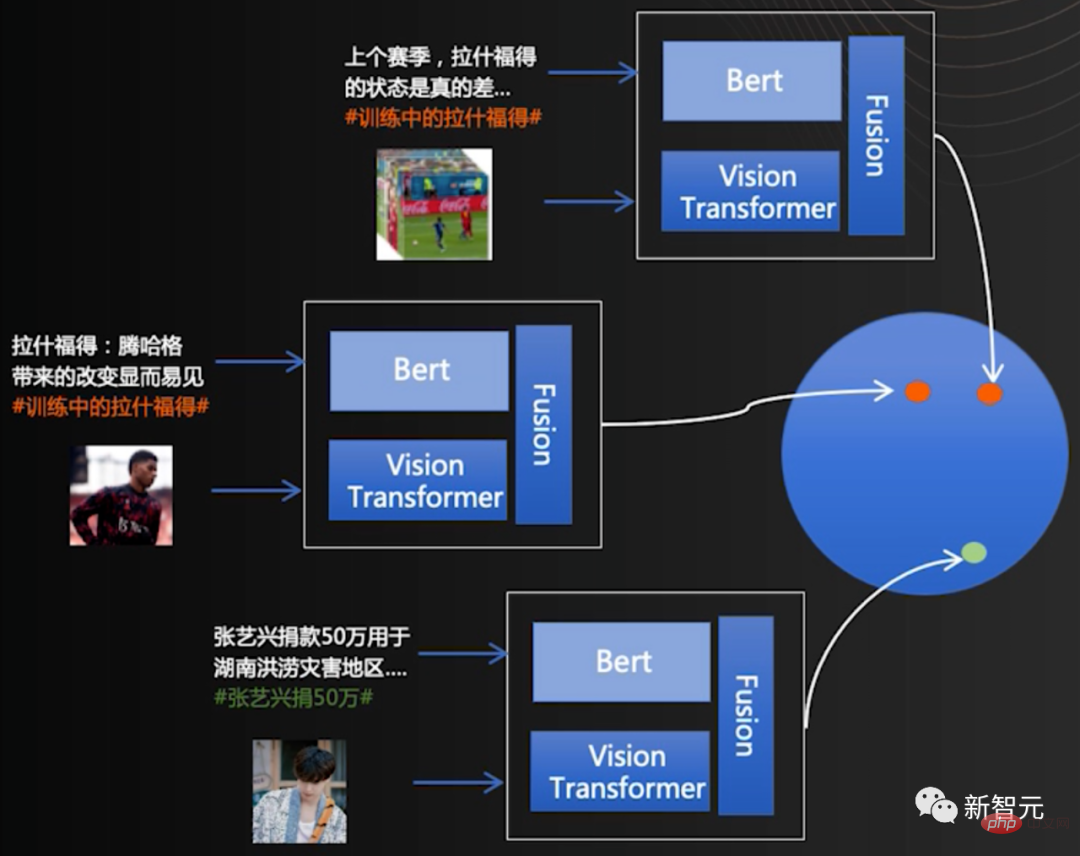
For example, we take two Weibo posts that both say "Rashford in training" as positive examples and randomly select some Microblogs of different topics are used as negative examples, so that training data can be automatically constructed.
For a certain Weibo, the text content is encoded by Bert, the image and video content are encoded by ViT, and then the information is fused through the fusion sub-network to form the embedding encoding of the Weibo. This is a pre-training process.
After pre-training, the well-learned Weibo encoder can be used to multi-modally encode new Weibo content to form embedding, which can be used in downstream tasks such as recommendation.
Secondly, in terms of user understanding, Weibo uses ultra-large-scale graph computing to better understand users’ reading interests. After all, Weibo has its own social media attributes, which naturally matches it well with large-scale graph computing.
Using users and blog posts as nodes in the graph, constructing edges in the graph based on the attention relationship between users, user and blog post reading, re-commenting and likes and other interactive behaviors, Weibo establishes A very large graph containing 1 billion nodes and 10 billion edges was created.
Through information dissemination, aggregation and integration in large-scale graph computing, embedding vectors representing user interests can be formed to better understand user interests.
In this way, it is possible to handle the following relationships between users, the re-comments and likes between users and blog posts, etc. at the same time.
After understanding what users are talking about and understanding the interests of Weibo users, the Weibo recommendation system will distribute high-quality Weibo posts to interested users in a personalized manner.
#So, how to construct an efficient recommendation system in such a complex scenario?
Weibo adopts a multi-scenario modeling approach. The ideal situation is to build only one recommendation model and use it to serve multiple scenarios.
So how to express the commonality and individuality between scenes? Network parameters can be shared between scenes, or the scenes can have exclusive private network parameters to reflect the commonality and individuality of the scenes.
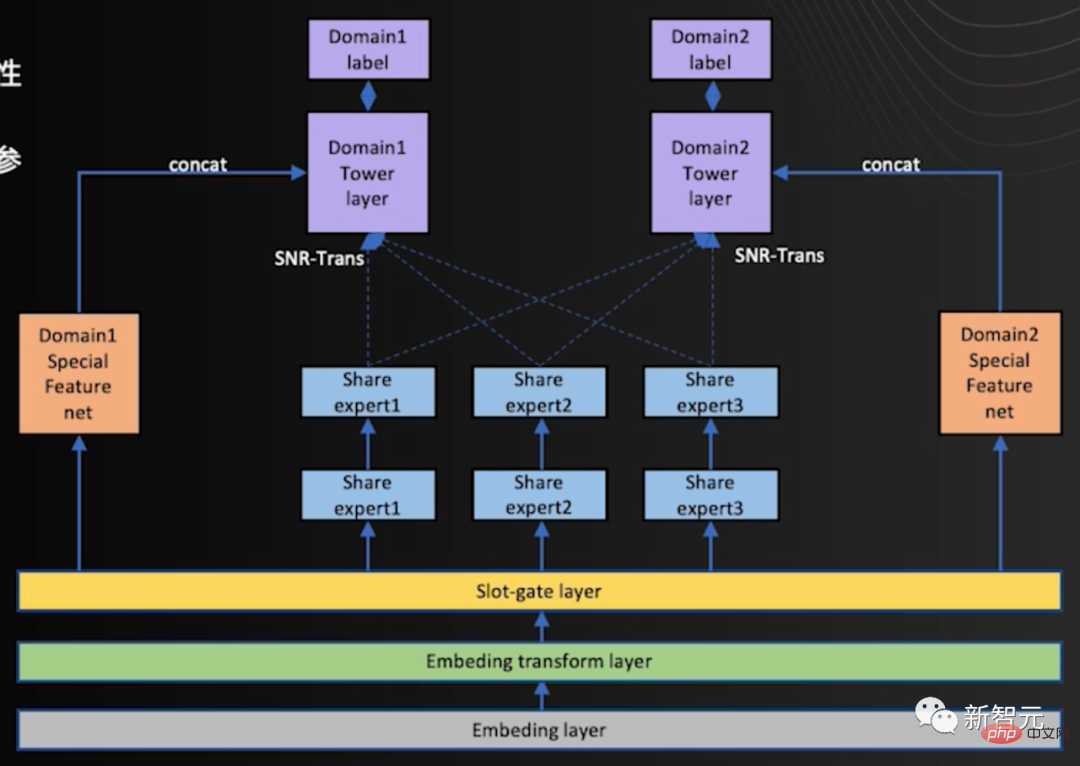
#For example, in this model diagram, in the underlying feature input layer of the model and a part of the "expert sub-network" in the middle of the network, these network parameters are Shared by each scene; while other sub-network parameters are unique to a certain scene
In this way, one model can serve multiple scenes and save model resources.
Now, let’s go back to the original “suspense”.
For Weibo, this hot spot that will "explode" if it is not fully protected has always been a very big challenge.
For example, the "Tangshan Incident" that has attracted widespread attention recently, the hot traffic on the day of the incident fully doubled the daily traffic peak.
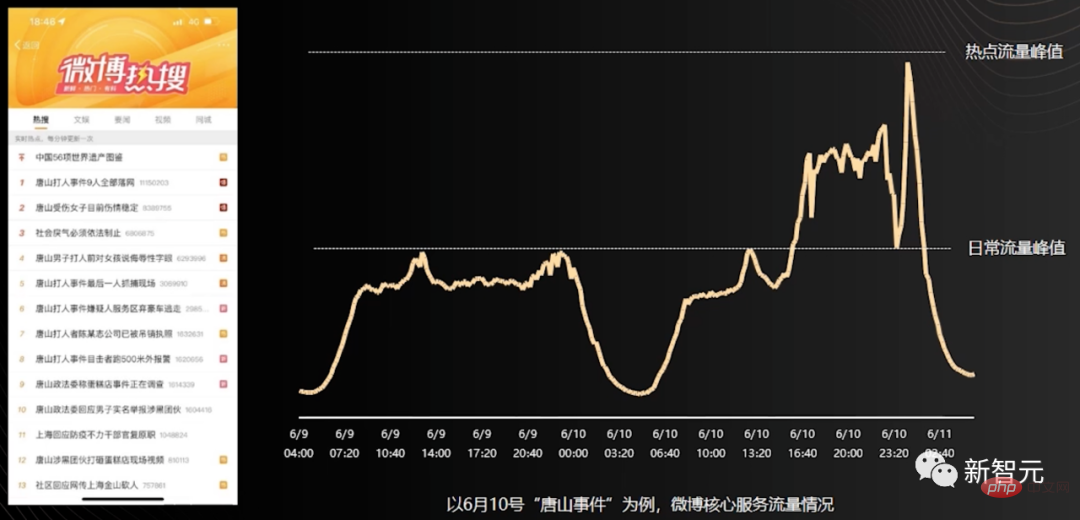
In this regard, Wang Wei said that Weibo has applied microservice Docker containerization technology very early, which not only improves the efficiency of service operation and maintenance, but also It also realizes the dynamic expansion and contraction capabilities of services. Currently, Weibo has the capacity to schedule more than 10,000 servers in 10 minutes, and has enough servers to handle hot traffic.
In addition, Weibo has also established a hotspot monitoring mechanism and hotspot linkage system, and through Weibo Mesh technology independently developed by Weibo, it can realize efficient cross-language calls between different services and improve the overall Service performance and linkage expansion efficiency.
Finally, Weibo adopts offline real-time hybrid deployment technology. The combination of CPU real-time preemptive scheduling technology and containerization technology is used to achieve offline real-time hybrid deployment capabilities of Weibo services.
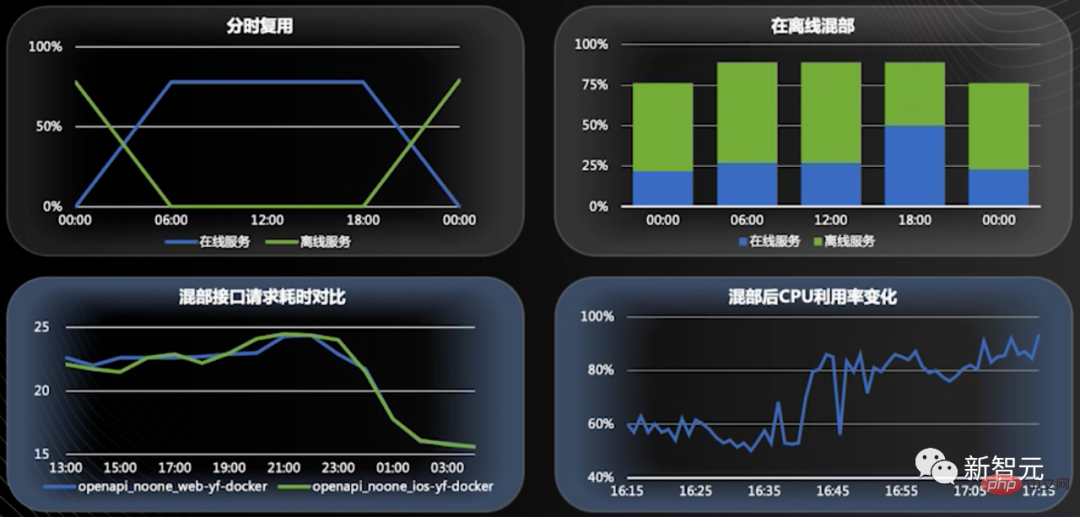
After combining the above operations, when hot traffic comes, you can take over the hot traffic of core services in seconds. Finally, let us review the development history of the Internet.
If the PC Internet is the beginning of the online world, then the rise of the mobile Internet allows us to put this invisible information space in our pockets. With the overlay and integration of big data, cloud computing, artificial intelligence and other technologies with the mobile Internet, we have entered the era of intelligent information.
Now, the hottest topic is the multiverse. Since last year, the Metaverse has triggered extensive discussions, such as digital twins, digital people, XR, blockchain technology, etc.
Wang Wei believes that the current application scenarios based on cutting-edge technologies such as AI, blockchain, and XR have already reflected some prototypes of the metaverse. Fields such as gaming and social networking are very good application scenarios for the Metaverse, which will ignite everyone's enthusiasm for participating in the Metaverse.
The above is the detailed content of Why is Weibo addictive? Decryption of the behind-the-scenes recommendation algorithm. For more information, please follow other related articles on the PHP Chinese website!




